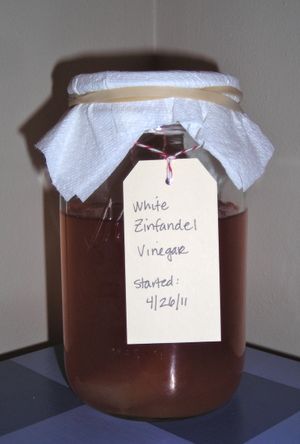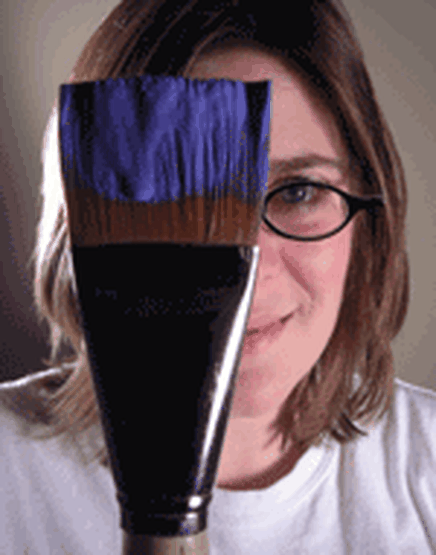Homemade Vinegar: Friday’s Project #13
I am on a mission to make more of the condiments and ingredients I use regularly in the kitchen. It is a project that, to me, seems to fit the mission of DwellWell. My first condiment experiment, homemade mustard, was a resounding success. (Soon I’ll be making more Guinness Mustard and a new recipe with roasted garlic and wine—turns out, it also makes a great gift).
This week I planted eighteen tomato plants in my yard. (Yes, this is too many, but I couldn’t help it). I see more salsa, pasta sauce, and homemade ketchup in my future.
Until the tomatoes grow, I’m satisfying my urge to make ingredients by trying my hand at making vinegar. Around Christmas I read an article about making vinegar with leftover wine and in April I ordered ingredients and started two batches. The process is slow (the wine needs time to turn), but it takes almost no effort, and is worth trying.
You will need:
- 1 – 2 cups of leftover wine (Use a wine you like to drink, but it doesn’t need to be fancy. From what I’ve read, the cheapest wine you enjoy will make better vinegar than most you buy at the store for general use).
- water
- a clean jar
- a paper towel
- rubber bands
- mother of vinegar (This is a live culture to get the process started. It looks like a blob of oddly colored gelatin floating in liquid).
- Dilute the leftover wine, 2:1, with water. The vinegar culture cannot grow in liquid with the alcohol content of undiluted wine. I simply measured the amount of wine I had at the end of a bottle and added half that amount of water. I made two versions: White Zinfandel (leftover from the jelly I made a month ago) and Cabernet Sauvignon.
- Put the watered down wine into a clean jar and add the mother. I bought my mother from Oak Barrels and am very happy with the product. Their mother is organic and my Cabernet vinegar is forming its new culture quite nicely (pictures to come).
- Place a paper towel over the jar opening and secure it with rubber bands. The paper towel allows the mother of vinegar to breathe (it needs air to develop the culture) and keeps potential fruit flies out.
- Label your vinegar jar with the type and date started, and store it in a dark, warm place for several months. In my research, I’ve discovered that vinegar likes a spot that maintains a 80-90 degree temperature. I started mine at the end of April and placed it at the back of my kitchen pantry knowing my house was nowhere near 80 degrees; it was, in fact, more like 65 degrees. The good news is that while the cooler temperature did slow down the forming of the new culture (the mother forms a gelatinous looking layer of scum on the top of the vinegar—it does not look pleasant, but it’s what you want to see), it did not halt the formation.
- After it sits for 2 – 3 months, start tasting it. You want to be careful when sneaking a taste. If you disturb the mother forming on top of the vinegar too much, it will have to reform, which takes more time. Gently push the mother aside with a straw and draw out enough vinegar to taste. If it’s good and vinegary, you’re ready to use it. If not, let it sit for another month before you try it again.
- When the vinegar is ready, strain and bottle it. I’ll let you know how mine turns out when I reach this point. I’m looking forward to making salad dressings and potato salad with vinegar brewed in my own pantry.
- I haven’t tried it yet, but it seems that you can reuse the mother that forms on your vinegar if you start a new batch or keep the mother alive in some diluted wine.
Let’s turn wine into vinegar!

